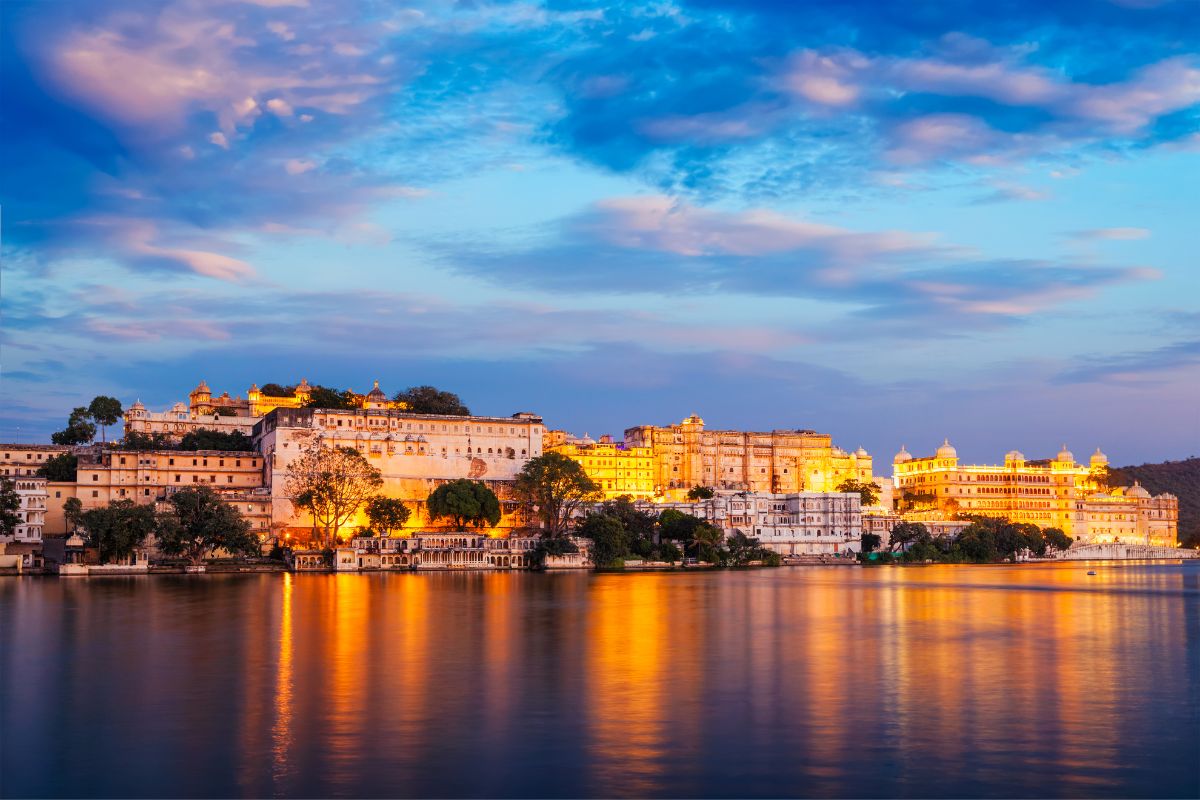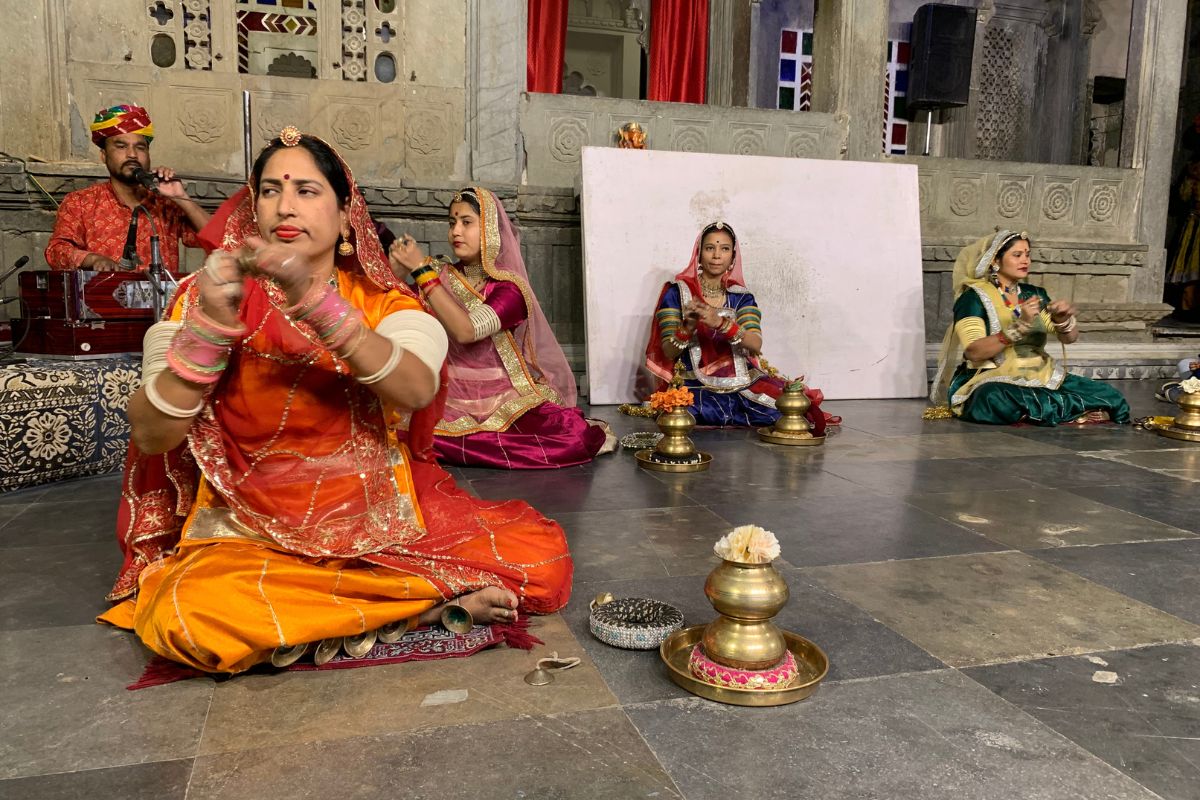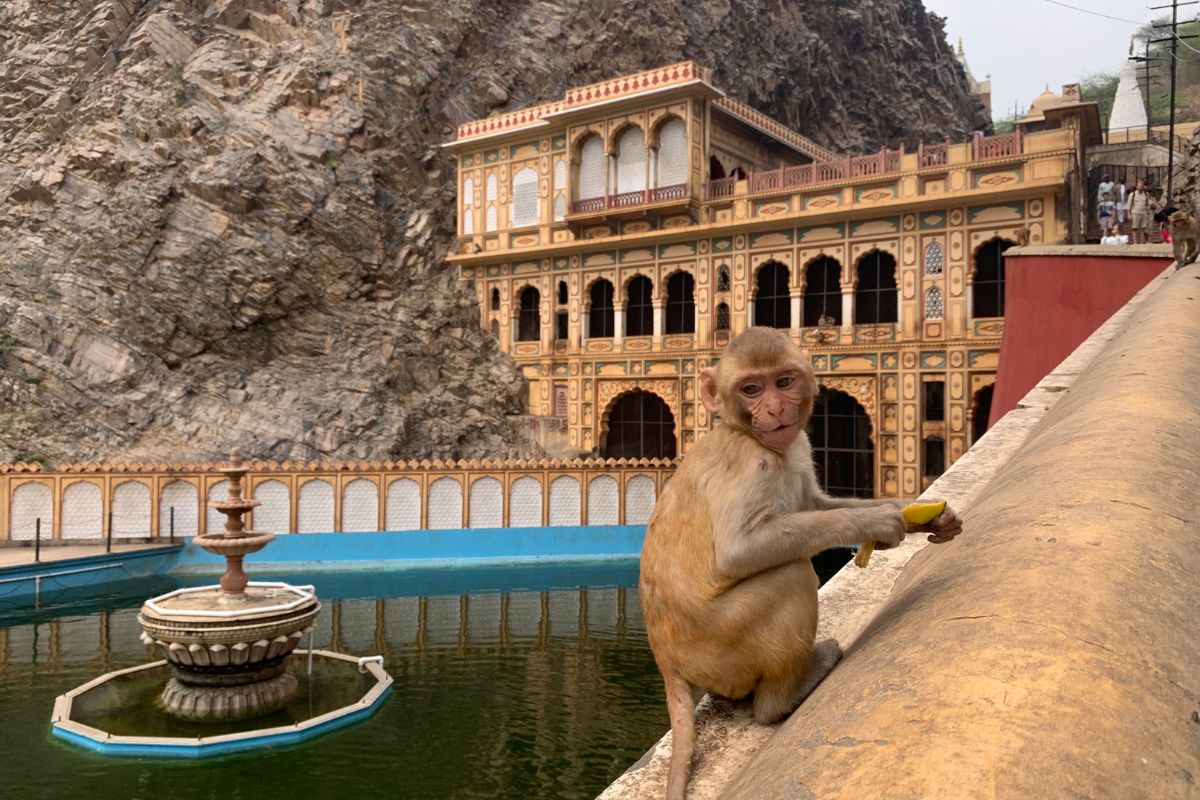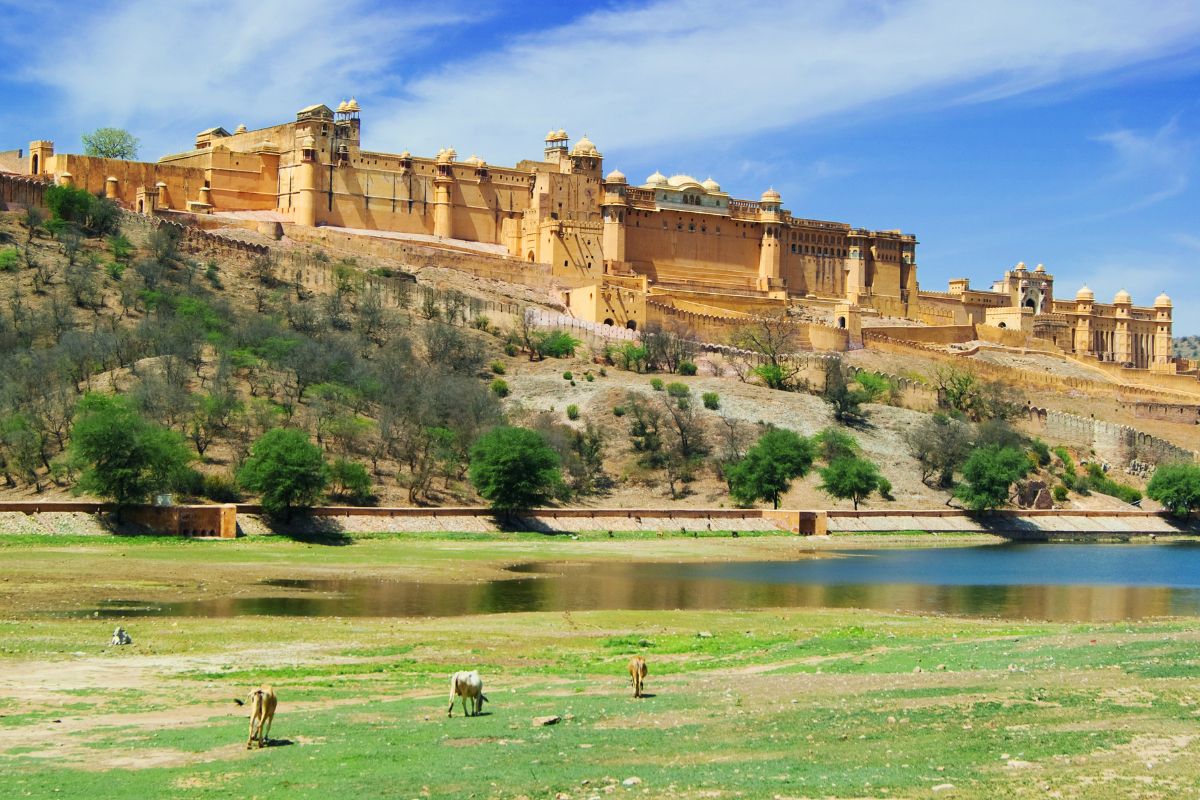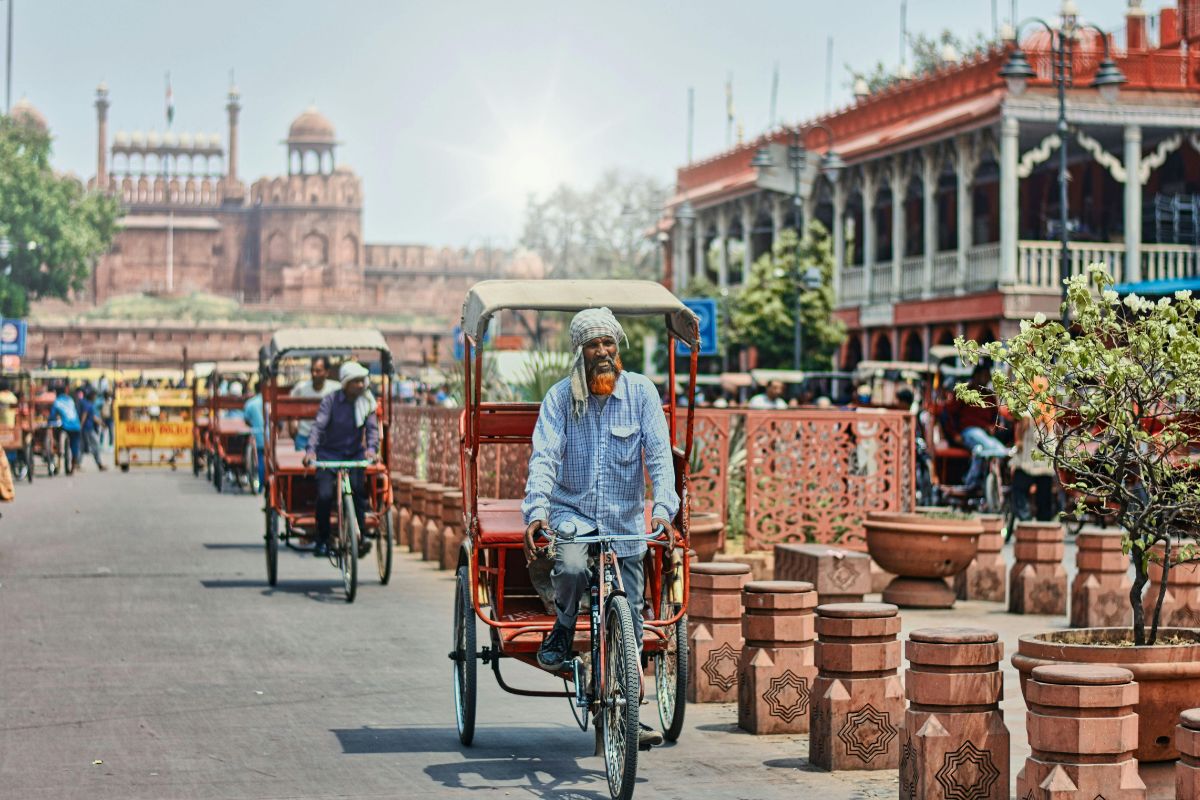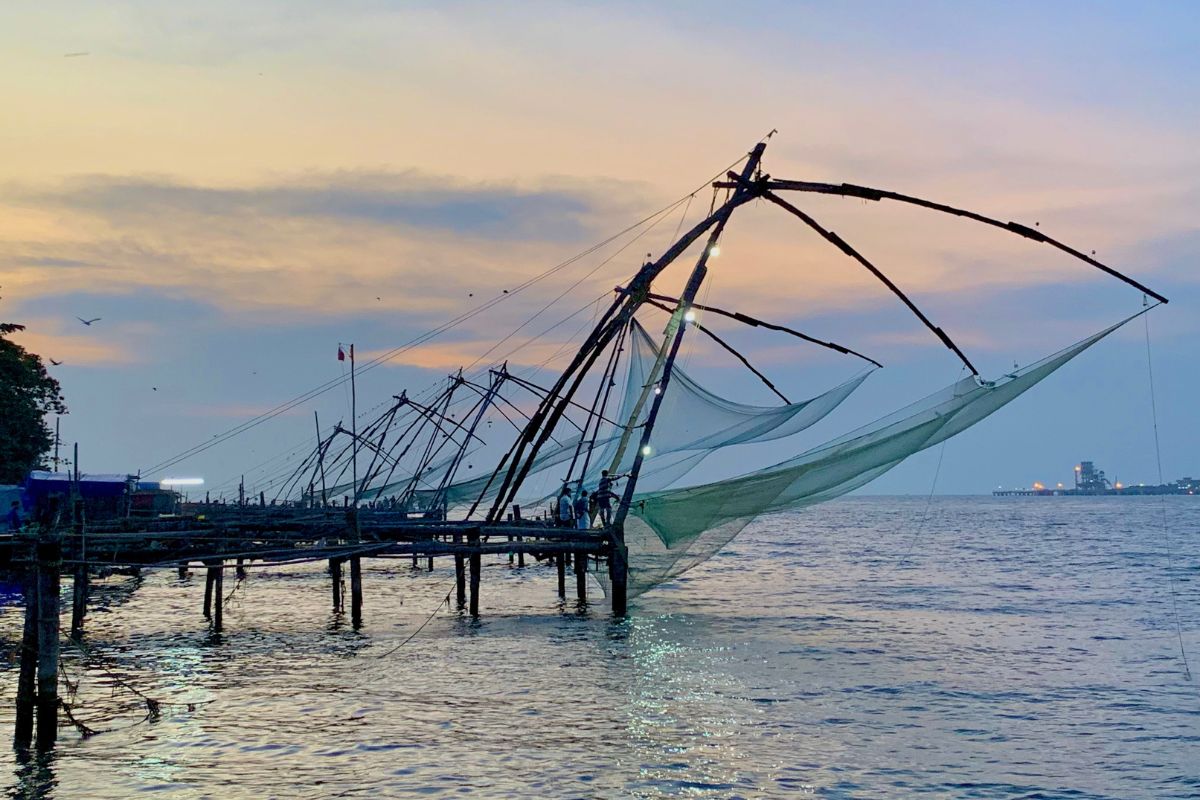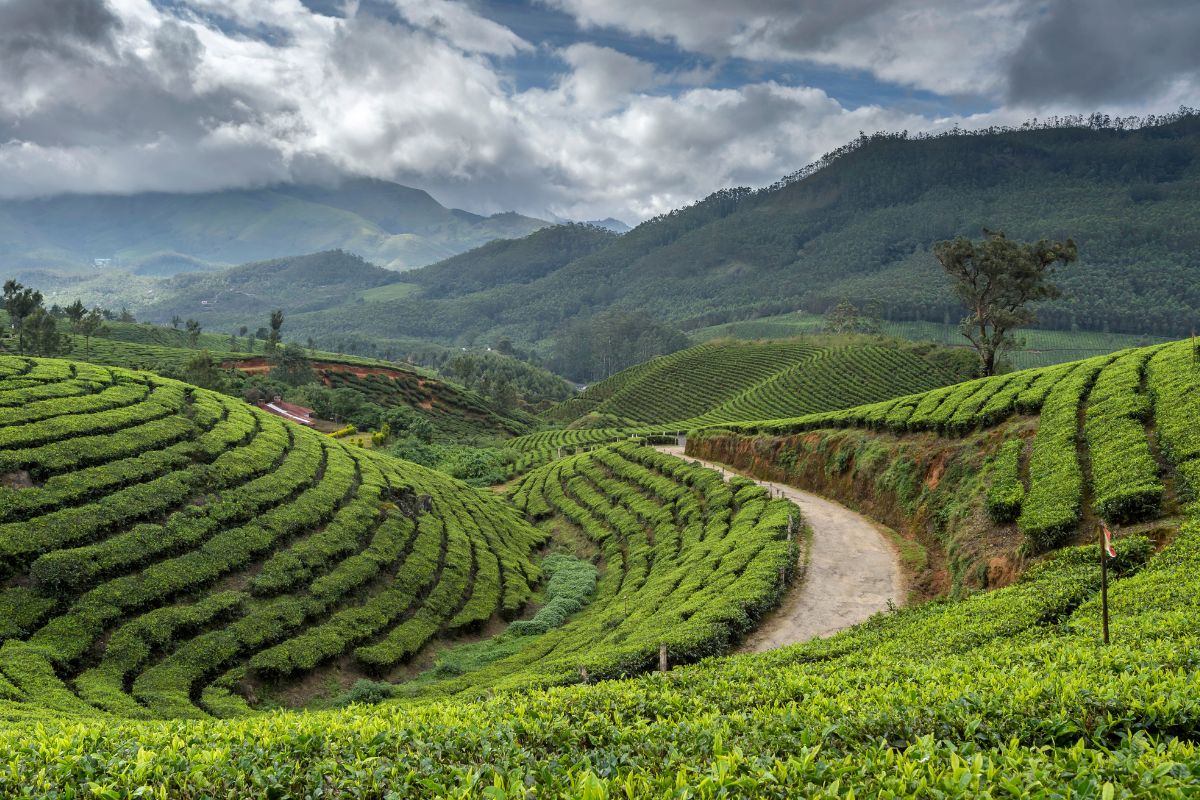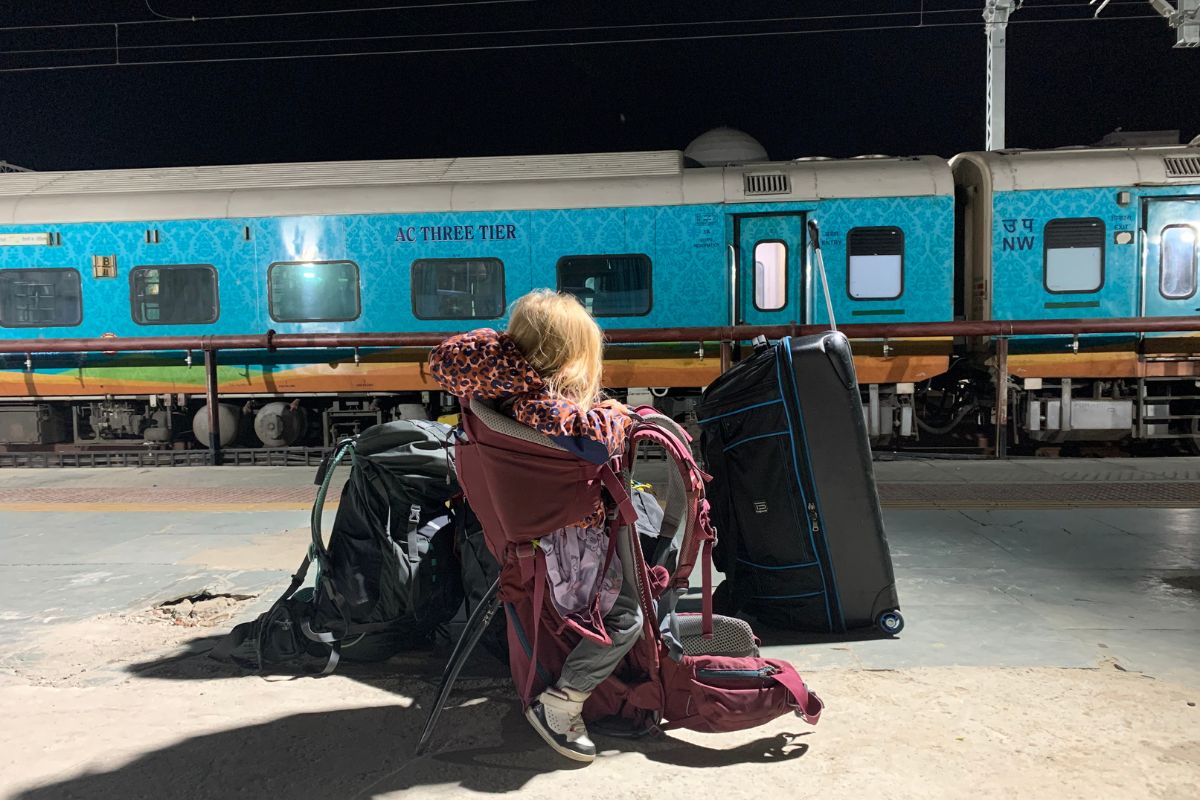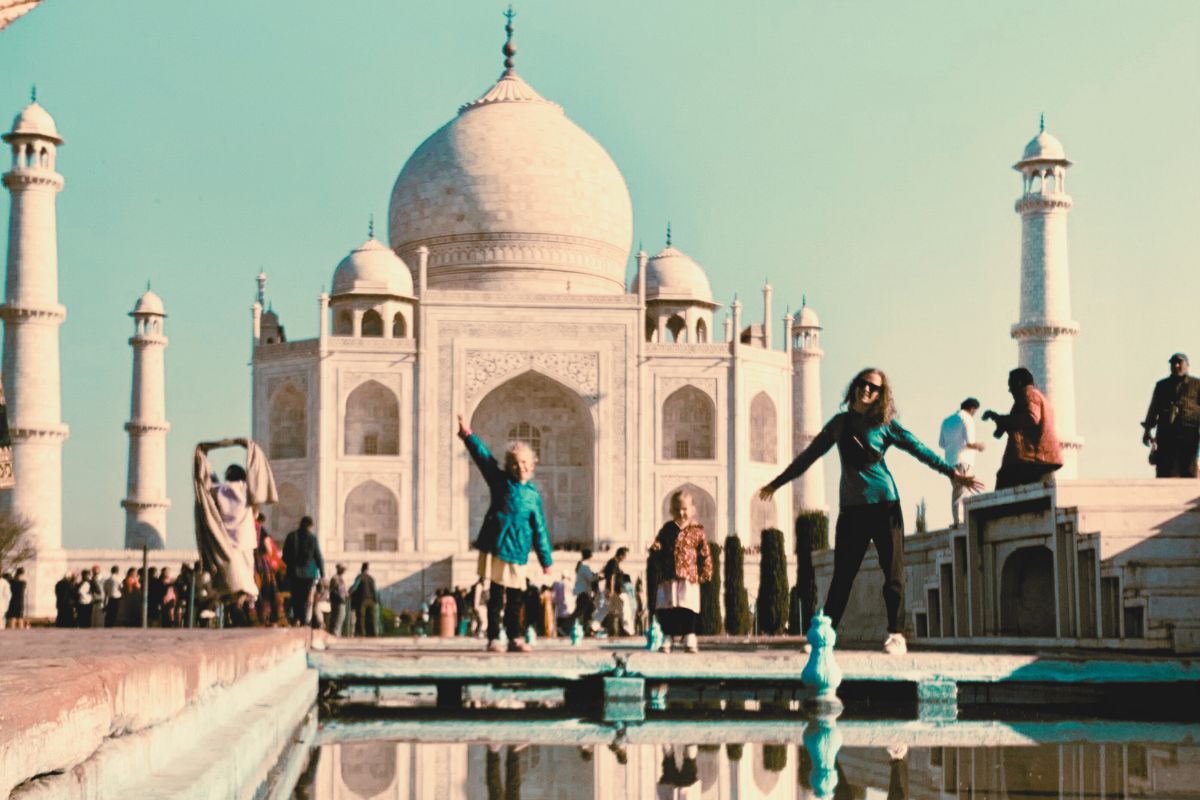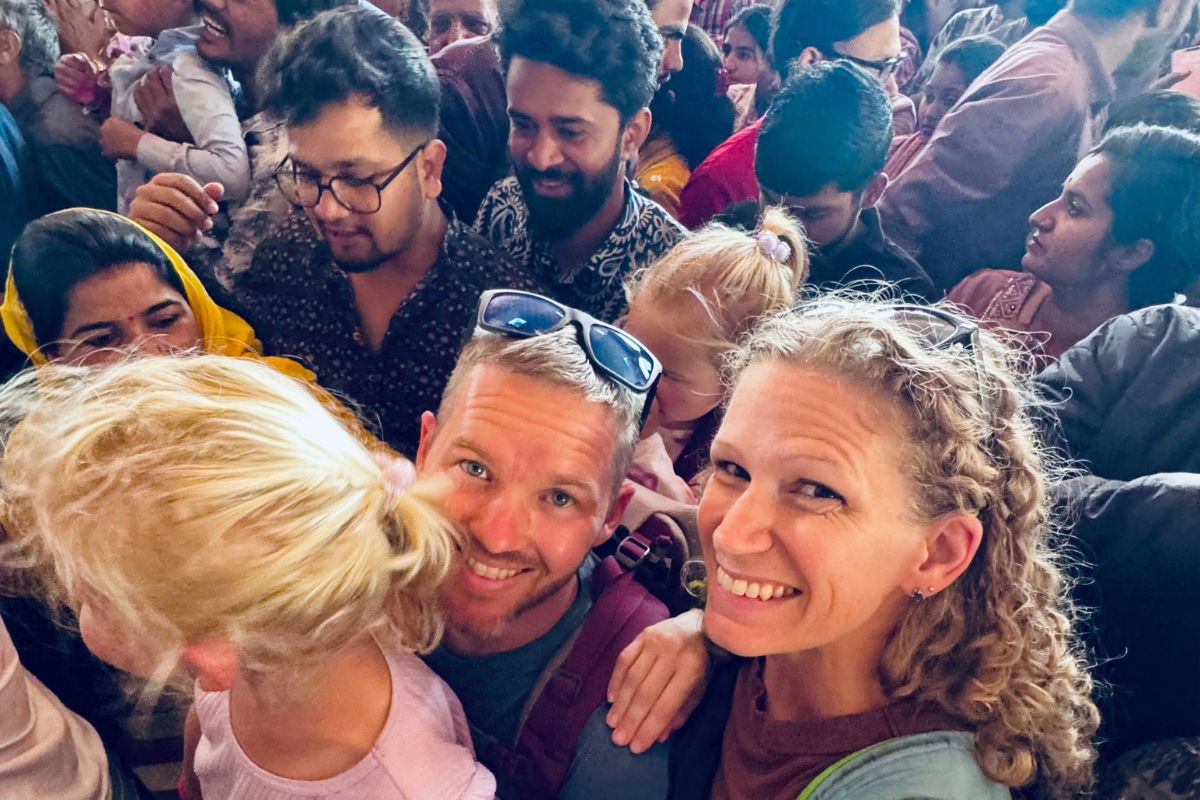India is a country that will challenge you, surprise you, and leave you with stories you’ll be telling for years. It’s chaotic, colorful, overwhelming at times—but it’s also one of the most rewarding places you can visit with kids. Whether you’re wandering through ancient forts, watching elephants bathe in a river, or eating fresh chapati, there’s something about India that captivates you.
For families, India offers an incredible mix of history, culture, adventure, and nature. You’ve got bustling cities like Delhi and Mumbai, peaceful backwaters in Kerala, tiger safaris in Rajasthan and Madhya Pradesh, and stunning mountains in Himachal Pradesh and Uttarakhand. The diversity is unlike anywhere else.
But traveling in India with kids is not the same as a typical family vacation. It takes planning, patience, and a willingness to go with the flow. Things won’t always go as expected—trains might be delayed, markets can be overwhelming, and figuring out what to eat might take some trial and error.
That being said, if you prepare well and keep an open mind, India is one of the most fascinating, budget-friendly, and enriching places you can visit as a family. Keep reading for our India travel tips, everything you need to know before you go—from transportation and safety tips to kid-friendly activities, packing advice, and ways to avoid common travel mistakes.
Is India a Good Destination for Families?
Absolutely. India is a place that never gets boring, especially for kids. One day, you’re exploring a centuries-old fort, the next, you’re riding a camel through the desert or watching monkeys swing through temple ruins. It’s wild, unpredictable, and full of surprises, but that’s exactly what makes it so great.
It doesn’t matter if your family prefers history, nature, food, or hands-on activities—India has a little bit of everything. You can hike in the Himalayas, go on a tiger safari, relax on a beach in Goa, take a boat ride through Kerala’s backwaters, or explore the chaotic but fascinating streets of Delhi. There’s no “one way” to experience India, which makes it perfect for families who like variety.
Why Kids Love India:
- Wildlife is everywhere. You don’t have to go on a safari to see animals—cows roam the streets, monkeys climb across rooftops, and you’ll see camels and elephants in many places too.
- The forts and palaces are straight out of a storybook. India has massive forts and royal palaces, with winding passage ways and great views when the sky is clear.
- There are hands-on experiences everywhere. Cooking classes, pottery workshops, henna art, and folk music performances that are literally fun for everyone in the family. And I can show you all the best spots on our map pins.
- Markets are colorful, loud, and full of interesting things to see. From handmade toys to fresh fruit stands and spice stalls, even a simple walk through an Indian market can be an adventure.
- The food is amazing. Even picky eaters can find something they like—fresh chapati, mild lentil soups, buttery rice, and mango smoothies are just a few of the kid-friendly options that my kids literally loved.
Is India Safe for Family Travel?
One of the biggest concerns people have about India is safety, but based on our personal experience traveling as a family, we never felt unsafe.
We visited Delhi, Jaipur, Udaipur, Kochi, and other cities, carrying our backpacks with no issues. We never felt like anyone was trying to steal from us, and we weren’t harassed by anyone either. We had to watch for some Uber scams in Udaipur but that was easy to spot. Of course, just like anywhere else, you need to be aware of your surroundings, but we felt comfortable walking through crowded markets, taking public transport, and exploring both touristy and off-the-beaten-path areas.
That said, India is intense. The sheer number of people, the noise, the traffic—it can feel overwhelming at first, especially if you’re coming from a quieter place. If you’re traveling with young kids, it’s important to plan your itinerary so you have breaks from the chaos—whether that means visiting parks, choosing smaller cities, or booking hotels with pools and outdoor space.
Common Safety Concerns & What to Know:
- Pickpocketing & Scams: While we didn’t experience any theft, pickpocketing can happen in busy areas like train stations and markets. I kept all my valuables in my cross body bag and my husband always keeps his stuff in his pants pockets and we had no issues.
- Traffic & Road Safety: Cars, motorbikes, tuk-tuks, cows, and pedestrians all share the same road in India, and traffic rules are more like suggestions if that’s what you want to call it. Even our Airbnb host said you don’t want to drive here. Always hold your child’s hand when crossing streets, and don’t assume cars will stop for pedestrians as vehicles have the right away here.
- Food & Water Safety: Food in India is amazing, but street food can be a gamble depending on hand hygiene from the individuals making the food and your ability to clean your hands as well. Stick to places that cook food fresh to order, wash hands before eating, and only drink bottled or filtered water.
- Begging: Yes, begging exists, especially in bigger cities. It’s not usually aggressive, but some kids may find it unsettling. If you don’t want to engage, simply ignore it and keep walking.
How to Stay Safe While Traveling in India with Kids
- Use Uber for transportation. These apps are safer than hailing random taxis. Uber is horrible in Udaipur so just grab a tuk tuk yourself.
- Have an offline map ready in case you lose service.
- Plan rest days or downtime. India is overwhelming, even for adults. Having a quiet day at a park, pool, or nature spot helps everyone recharge.
Would I take my kids back? Without a doubt. India is big, busy, and unpredictable, but it’s also one of the most exciting and rewarding family travel experiences you can have. If you go in with the right expectations and a little extra planning, it’s an incredible place to explore as a family.
Best Family-Friendly Destinations in India
India is massive, and choosing where to go can feel overwhelming, especially when traveling with kids. Every region offers something different—forts and palaces in Rajasthan, beaches and spice farms in the south, bustling cities full of history, and quiet mountain retreats perfect for slowing down.
The key is to balance busy, high-energy destinations with places where kids can run around and take a break from the chaos. Some cities can be intense, so mixing in nature, open spaces, and interactive experiences will make the trip more enjoyable for everyone.
Here are some of the best family-friendly destinations in India, based on a mix of adventure, cultural experiences, outdoor fun, and ease of travel with kids.
City Palace in UdapipurUdaipur – The Perfect Mix of Culture, Nature, and Hands-On Activities
Udaipur is often called the “City of Lakes,” but what makes it special for families is the mix of interactive experiences, beautiful scenery, and a more relaxed pace compared to bigger cities.
Best things to do with kids in Udaipur:
Cooking Class- Take a family-friendly cooking class. We did this, and it was hands down one of our favorite activities. The kids helped make chapati and simple dishes, and the best part was sitting down to eat everything at the end.
- Hike to a scenic viewpoint. Bahubali Hills is a short, easy hike just outside the city that offer amazing views of Udaipur and its lakes. Not to mention there are plenty of snack options along the way as well.
- Watch a folk dance and puppet show at Bagore Ki Haveli. The performances are colorful, fun, and engaging, even for younger kids.
- Visit City Palace. It’s huge, it has literally been added onto for centuries and the winding pathways are pretty awesome as well. Don’t forget to check out the views as you climb up the palace.
Udaipur is walkable, but tuk-tuks are the best way to get around with kids. Just be ready to negotiate fares. I would typically check Uber fares online and then round up to the nearest 50 or 100 rupees.
Monkey Temple in JaipurJaipur – Forts, Camels, and Hands-On Cultural Experiences
Jaipur is one of the most kid-friendly cities in India because of its massive forts, outdoor activities, and fun cultural experiences. It’s also a great base for exploring other parts of Rajasthan.
Best things to do with kids in Jaipur:
Amber Fort- Amber Fort. This is one of the most impressive forts in India, and kids love exploring its maze-like passageways. The views from the top are incredible.
- Interactive art and pottery workshops. There are studios where kids can try their hand at pottery, block printing, or painting.
- Jaipur’s local markets. Johri Bazaar and Bapu Bazaar are great for picking up colorful souvenirs, textiles, and handicrafts.
Jaipur is busy and can feel overwhelming, but visiting early in the morning before the crowds hit makes a big difference.
Old Town DelhiDelhi – History, Parks, and a Surprising Amount of Green Space
Delhi is chaotic, no doubt, but it’s also packed with history, kid-friendly attractions, and open green spaces where you can take a break from the crowds.
Best things to do with kids in Delhi:
Lodhi Garden in New Delhi- Lodhi Garden. If you need a break from the city’s noise, this is a great place for kids to run around while parents relax.
- Humayun’s Tomb. A stunning, lesser-crowded alternative to the Taj Mahal, with plenty of open space for kids to explore.
Delhi’s metro system is clean, efficient, and easy to use. If you’re traveling with a stroller, use Uber instead of tuk-tuks, as many metro stations don’t have elevators.
Kochi – A Laid-Back Coastal City with Culture and Nature
Kochi is completely different from cities like Delhi and Jaipur—it’s calm, coastal, and has a mix of cultural and outdoor activities that make it ideal for families.
Best things to do with kids in Kochi:
Chinese Fishing Nets- Watch the Chinese fishing nets in action. Some fishermen will let kids help pull in the nets, which is a fun hands-on experience, just be prepared to tip, they push for it.
- Visit a spice farm. Kerala is famous for its spices, and many plantations offer tours where kids can see how cinnamon, cardamom, and nutmeg.
- See a Kathakali dance performance. These traditional dance dramas have elaborate costumes and exaggerated facial expressions, which make them fun for kids to watch.
- Take a boat ride. Whether it’s a houseboat in the backwaters or a smaller ferry ride, being on the water is always a hit with kids.
Kochi is walkable in some areas, but taxis or tuk-tuks are the best way to get around for longer distances.
Munnar’s Tea PlantationsMunnar – Tea Plantations, Waterfalls, and Fresh Mountain Air
If you need a break from India’s heat, crowds, and busy streets, Munnar is the perfect escape. Set in the Western Ghats, this area is full of rolling tea plantations, misty hills, and cooler temperatures that make it a great stop for families who love nature.
Best things to do with kids in Munnar:
- Visit a tea plantation. While younger kids might not care about the tea-making process, the green rolling hills are beautiful and easy to walk through.
- Take an easy nature walk. Munnar has shorter hikes that are perfect for families who want to explore without doing a strenuous trek.
- Check out the waterfalls. There are several waterfalls in the area, some of which you can wade into.
- Go wildlife spotting. If you’re lucky, you might see wild elephants in the area.
Munnar is best explored by hiring a car for the day since public transport is limited.
Each destination has its own vibe, so it depends on what kind of trip you’re looking for. The key is balancing busy cities with places where kids can run around and take a break.
India is not a place you can see in one trip, so don’t feel like you have to do everything. Pick a few places, take it slow, and enjoy the experience.
Packing Essentials for Kids in India
Packing for India with kids means balancing comfort, practicality, and adaptability. The climate can vary dramatically depending on where and when you visit, so having the right essentials will make your trip smoother.
Must-Pack Clothing & Accessories
- Light, breathable clothes – Stick to cotton and linen, as India’s climate can be hot and humid, especially in cities and lowlands.
- A light jacket or sweater – Mornings and evenings can be cool, particularly in northern regions, hill stations, and winter months.
- Sun protection – The sun can be intense, so pack sunscreen (reef-safe if visiting beaches), sunglasses, and hats (I’m not a hat person, but they’re good to have if you like them)
- Comfortable walking shoes – Streets can be uneven, and temples often require removing shoes, so make sure whatever you bring you’re absolutely comfortable in them all day long.
Medications & Health Essentials
India has pharmacies in nearly every town, but availability of certain Western-brand medications is not guaranteed. Always pack:
- Prescription medications – Bring enough for your entire trip, along with a copy of the prescription.
- Common medications –
- Children’s ibuprofen or acetaminophen
- Antihistamines for allergies or bug bites (we are benadryl fans)
- Electrolyte powder or rehydration salts (heat and travel tummy troubles can lead to dehydration) (this instagram link also shares my oral rehydration I used when I had stomach trouble
- MiraLAX or other constipation relief – We had a hard time finding this in Mexico, so if your child is prone to constipation, pack what they need.
- Diaper cream and baby wipes – These exist in India but may not be the brands or consistency you’re used to.
- Hand sanitizer and sanitizing wipes – Public bathrooms sometimes don’t have soap, so bring this to keep hands clean
Best Way to Pack Light
- Follow the “two of each” rule – Two short sleeves, two long sleeves, two shorts, two pants, and a couple of layering pieces. Plan to rewear and do laundry regularly.
- Laundry services – In India, do it yourself laundromats are rare as most laundry is done by drop-off services or hotels. Factor in at least 24 hours for laundry turnaround and be aware that hand-washing may be needed for delicate fabrics.
- Toiletries – Bring essentials like travel-size shampoo, toothpaste, and lotion for the first few days, but plan to buy extras locally to save space in your luggage. India has a huge variety of personal care products at supermarkets and pharmacies.
Extras That Make a Difference
- Portable fan or cooling towel – If traveling in hot months, this can help manage the heat.
- Bug spray with DEET or picaridin – Mosquitoes can be a concern, especially in rural areas.
- Small first-aid kit – Bandages, antiseptic wipes, and anti-itch cream come in handy more often than you’d think.
- Reusable water bottles – Many hotels offer filtered water refills, and bottled water is easy to find. Hydration is key.
- Snacks from home – Indian snacks are great, but if your child has specific favorites, bring some for long travel days.
Packing for India with kids isn’t just about minimizing luggage—it’s about making sure you have the essentials to keep them comfortable and healthy while leaving room for flexibility. Being prepared will make your trip that much easier.
Auto Rickshaw (tuk-tuk)Getting Around India with Kids
India has a massive transportation network, and figuring out the best way to get from place to place depends on distance, budget, and comfort. With kids in tow, some options are easier than others, and a little planning can make a huge difference in how smoothly things go.
Walking
For short distances, walking is often the best way to explore. Old town areas, markets, and historical sites are usually best navigated on foot since traffic can be chaotic and streets are often too narrow for cars. However, sidewalks are not always existent and if they are there may be barriers present on them anyways. Pedestrian crossings aren’t always well-marked or in existence either and pedestrians do not have the right away, so always stay alert.
Taxis and Auto Rickshaws (Tuk-Tuks)
For short trips, taxis and auto rickshaws are everywhere. Tuk-tuks are inexpensive, can be fun for kids, and great for weaving through traffic, but they don’t have seat belts or car seats. Not to mention some don’t even have a door to them. If that’s a deal-breaker, stick to taxis or rideshare apps like Uber, which are available in most cities. You can request a larger car, but don’t expect back middle seat belts as they are rare in a lot of Ubers we rented. So keep this in mind.
Negotiating fares with tuk-tuks is expected, so make sure you agree on a number before getting in. Many times they pull up and just shoo you in when you say where you want to go, but make sure you do this otherwise you will end up paying WAY more than expected.
Awaiting a TrainTrain Travel
India’s train network is extensive and one of the best ways to cover long distances while still experiencing the country up close. For families, sleeper class (AC 2-Tier or AC 3-Tier) is the best option for any long journey, but you usually have to book way ahead of time. These classes have padded bunks, air conditioning, and reserved seating, making them far more comfortable than general seating. AC 1st class offers more privacy with lockable compartments, but tickets sell out fast and are expensive compared to other classes.
A few things to know about train travel in India with kids:
- Book in advance. Indian Railways has a ticketing system where long-distance trains sell out weeks ahead. Tatkal (last-minute) tickets are an option, but availability isn’t guaranteed and seating can be iffy which isn’t good with kids. We prefer assigned seating that we know ahead of time.
- Pack snacks and water. While food is available on the trains, it’s unknown the quality in my opinion or whether the kids are going to like it, so we stuck to bringing our own. But we did get some chai tea for 10 rupees a cup, definitely do this.
- Train doors may are not secure. The doors between cabins don’t fully close all the way and although they are quite heavy to open they are open just enough for little ones to sneak through, so keep and eye on your kids. The areas between the trains do have bathroom western and eastern style so choose what you want, but they do smell awful or urine. This is also the area where the doors are present to the outside and they are often not secured and just wide open, which is super cool to look out, but not safe with kids.
- Sleeper trains are great for long distances. They allow you to travel overnight and wake up in a new city, which saves money on a night of accommodation.
For shorter train rides (like local metro systems in major cities), metros are very clean, super affordable, and efficient, making them a great option for getting around without the hassle other than security checks.
Domestic Flights
For long distances (for example, Delhi to Kerala or Rajasthan to the southern beaches), flying is the easiest and fastest way to get around. Domestic flights are reasonably priced if booked in advance, but airlines have varying rules for baggage and ticketing. When we flew we used India Air each time which was best for us and isn’t a budget airline so no extra fees. A few things to keep in mind:
- Check in online ahead of time. Be prepared at the airport to do multiple checks at the doorway and then the check in counter as well. Have all your stuff ready for each stop.
- Security procedures are strict when it comes to electronics. India is very strict about electronics in their luggage. They want to know what is in your luggage for under the plane and sign a waiver and then you have to unpack all your carry on to go through security if you’re carrying any electronics as well. Otherwise they will flag you, write your name in a little book they keep and empty your luggage for you anyways.
- Budget airlines charge for everything. This is a well known for any budget airline. If you’re flying low-cost carriers like IndiGo, SpiceJet, or AirAsia India, be prepared to pay extra for baggage, meals, and seat selection.
Buses
Long-distance buses connect almost every major city and town, and while they’re budget-friendly, they aren’t always the most family-friendly option. Sleeper buses offer reclining beds for overnight travel, but road conditions can make for a bumpy ride. If taking a bus, it’s best to book with a reputable company that offers AC coaches.
Renting a Car
Self-driving in India is just not even and option for us westerners. Traffic rules are loose, roads can be chaotic, and navigating unfamiliar areas with kids in the backseat is stressful. Hiring a car with a driver is a better option and surprisingly affordable for full-day trips or road trips between cities. Most major destinations have private car services that can be booked in advance.
Food & Hygiene: Keeping Kids Safe and Healthy in India
Eating in India is one of the best parts of traveling here, many people think food is medicine and get it fresh from the market regularly, but when you’re with kids, food safety and hygiene become top priorities. Believe me we’ve all had food borne illness since being in India and it’s not fun. The good news is, there are plenty of kid-friendly options, and with a little preparation, you can avoid the common stomach issues that travelers sometimes face.
Kid-Friendly & Safe Foods to Try in India
While Indian food is full of rich flavors and spices, there are plenty of mild, simple options that are easy for kids to enjoy:
- Paratha – These soft, flaky flatbreads are made fresh daily and can be stuffed with potatoes, paneer (cheese), or even plain for picky eaters. Pair with yogurt or butter for a simple, filling meal.
- Dosa – A thin, crispy rice pancake often served with coconut chutney. The plain version is great for kids.
- Rice & Dal – Mild lentil soup with rice is a staple in India and is easy on the stomach.
- Idli – Soft, steamed rice cakes that are mild and easy to eat.
- Roti with mild curry or vegetables – Fresh whole wheat flatbread with a side of plain cooked vegetables or dal is a safe option for kids.
- Fresh fruit (peeled) – Bananas, oranges, and pomegranates are easy to find and safe when peeled. Avoid pre-cut fruit from street vendors.
- Pizza & Burgers – Western food is available almost everywhere in cities if kids need something familiar. Just be mindful that some places make “spicy” versions of these foods—so ask first.
- Plain yogurt (curd) – Helps with digestion and can be mixed with rice or fruit.
Avoiding Food-Related Illnesses
Foodborne illnesses can ruin a trip fast, so taking precautions is key.
- Wash hands before meals – Most restaurants have a sink for handwashing, and many locals wash before eating. Make it a habit and use soap.
- Carry hand sanitizer – Especially useful in places where soap and water aren’t available.
- Ask for “less spicy” or “no spice” – Even if a dish seems mild to locals, it might be too much for a child unfamiliar with Indian spices. Always specify, as some dishes automatically come with heat.
- Stick to hot, freshly cooked food – Avoid anything that looks like it’s been sitting out, especially at buffets or street stalls.
- Be cautious with street food – If you try it, go for stalls with high turnover where food is being cooked fresh in front of you. Avoid anything that has been pre-cut, like fruit salads or chutneys.
- Drink bottled or filtered water – Always check that the bottle is sealed before opening it. Most restaurants will provide filtered water, but when in doubt, stick to bottled.
Best Way to Handle India’s Climate & Mosquitoes
India’s climate is diverse, and knowing what to expect in each region will help you pack smart and stay comfortable. Mosquitoes can also be an issue in certain areas, so taking the right precautions is key, especially when traveling with kids.
Understanding India’s Climate by Region
India’s weather depends heavily on where and when you visit.
- North India (Delhi, Rajasthan, Agra, Varanasi) – Summers (April–June) are extremely hot, with temperatures often exceeding 100°F. Winters (December–February) can be chilly, especially in the mornings and evenings, so a light jacket is necessary. October–March is the most comfortable time to visit.
- South India (Kerala, Goa, Tamil Nadu, Karnataka) – This area is generally warm and humid year-round, with temperatures staying between 75-90°F. Monsoon season (June–September) brings heavy rain, but it’s still warm.
- Hill Stations (Darjeeling, Munnar, Ooty, Himachal Pradesh, Uttarakhand) – These higher-altitude destinations have cooler temperatures year-round, sometimes dropping to near freezing in winter. A sweater or light jacket is a must, even in summer.
- Deserts (Rajasthan, Gujarat, Ladakh) – Daytime temperatures can be scorching, but nights can be surprisingly cold, especially in winter. Layers are essential.
The best way to handle India’s heat and humidity:
- Wear lightweight, breathable fabrics – Cotton and linen are best for dealing with humidity.
- Stay hydrated – Carry a reusable water bottle and refill it with filtered or bottled water. If you don’t have access to this using LifeStraw is important.
- Avoid the midday sun – If visiting in warmer months, plan sightseeing for mornings and late afternoons.
- Use sunscreen and sunglasses – The sun can be intense, especially in open areas like Rajasthan and Kerala’s beaches.
Mosquito Protection
Mosquitoes are a real issue in some parts of India, especially in the south and during monsoon season.
- Use mosquito repellent – A repellent with DEET, picaridin, or oil of lemon eucalyptus works best. We did not find DEET in Kochi, there was only one option for application, so if you do want DEET you have to bring it yourself.
- Wear long sleeves and pants – Lightweight, loose-fitting clothes that cover arms and legs help prevent bites, especially in high-risk areas and even while sleeping
- Sleep with a fan or mosquito net – You’d be surprised how easily they get inside and having a mosquito net was such a major help. In cities, air-conditioned rooms with sealed windows do help reduce exposure.
- Check for standing water – Mosquitoes breed in stagnant water, so try to avoid places with uncovered water sources near your accommodation or dump that water if its just sitting.
- Be mindful of dengue risk – Unlike malaria, dengue is spread by mosquitoes active during the day. Wearing repellent during the day is just as important in high-risk areas.
Vaccine & Health Considerations
Before traveling, check WHO and CDC recommendations for vaccines. The most commonly recommended ones for India include:
- Hepatitis A & B – Transmitted through contaminated food and water.
- Typhoid – Particularly important for rural areas and street food lovers.
- Rabies (if traveling long-term or to remote areas) – Not essential for most short trips but worth considering if interacting with animals.
- Japanese Encephalitis (for extended stays in rural areas) – Rare, but present in some parts of India.
- Routine vaccines (MMR, Tetanus, Diphtheria, Whooping Cough, etc.) – Ensure all standard vaccinations are up to date.
Talk to your doctor or a travel clinic to decide what’s necessary for your family based on where you’ll be going.
Sacred CowPreparing Kids for India’s Culture & Atmosphere
India is vibrant, loud, and full of life—something that makes it an incredible place to experience but can also be overwhelming, especially for kids who aren’t used to that level of sensory input. The combination of honking traffic, crowded streets, new smells, and unfamiliar customs can take some getting used to. With a little preparation, kids can adjust more easily and appreciate the experience rather than feel overstimulated by it.
Helping Kids Adjust to India’s Energy
- Set expectations before arriving – Watch videos, look at pictures, and talk about what to expect. Show them clips of busy markets, tuk-tuks zipping through traffic, and how people greet each other. If they know what’s coming, they won’t feel as overwhelmed when they step off the plane.
- Start slow – The first few days, ease into the experience. Choose a quieter area or park to stay visit rather than diving straight into the busiest parts of a city. Let them adjust at their own pace.
- Take breaks when needed – If the noise and crowds get overwhelming, go somewhere quiet or even head back to your accommodation for a reset, which is often just as easy as changing your scenery. Many large cities have green spaces like Lodhi Garden in Delhi or Cubbon Park in Bangalore, which are great for a breather.
- Use noise-canceling headphones if needed – The constant honking in some cities can be A LOT. If your child is sensitive to sound, having headphones for busier areas can help.
Introducing Cultural Differences
India is diverse, and part of what makes it special is how different cultures, religions, and traditions exist side by side. Some things kids might notice that are different from home:
- People dress differently – Some men wear long hair and beards for religious reasons. Women often wear saris or salwar kameez instead of Western clothing.
- Eating with hands is common – In many places, people eat with their hands instead of utensils, especially with foods like dosa and rice dishes. It’s normal and encouraged, and kids usually love trying it.
- Head bobbling means yes – Instead of nodding up and down, many Indians use a head bobble to indicate agreement. It can be confusing at first, but once you notice it, it becomes second nature to interpret.
- Personal space is different – In crowded areas, people stand close together, and strangers may ask to take photos with your kids out of curiosity. It’s okay to decline if you’re not comfortable.
- Cows roam freely – On city streets, in villages, even in front of stores—cows are sacred in Hindu culture and have the right of way everywhere.
Helping Kids Feel Comfortable
- Talk about staring – Western families, especially those with young kids, often attract attention. It’s not meant to be rude—people are very curious. If it makes your child uncomfortable, a simple smile or wave usually works to break the tension.
- Practice greetings – A simple “namaste” with hands together can be a fun way for kids to connect with locals. Learning a few Hindi or regional phrases can help them feel engaged.
- Prepare for different bathrooms – Many public toilets are squat toilets, and toilet paper isn’t always provided. Carry tissues or wipes, and if your child is hesitant about squat toilets, practice balancing before the trip so it’s not a shock.
India is intense, but it’s also incredibly rewarding. Kids adapt quickly, and with a little preparation, they can thrive in the new environment, soaking in the culture while feeling secure and supported.
Budgeting for a Family Trip to India
One of the biggest reasons India is such a great destination for family travel is that it can be incredibly budget-friendly while still offering amazing experiences and food. Costs will vary depending on where you go, how you travel, and your comfort level, but overall, India is one of the best places to stretch your travel budget without sacrificing quality.
Estimated Daily Costs for a Family of 4
For a budget to mid-range experience, including accommodation, food, transportation, and activities, expect to spend:
- Budget travel: $50-$75/day
- Mid-range travel: $75-$100/day
- Luxury travel: $120+/day
This can obsviously fluctuate depending on where you are, but we have averaged $60-96 USD per day as a family of 4.
Breakdown of Costs
- Accommodation: $40-50/night for Airbnbs with washers, which is a must for us. Luxury hotels start around $100+.
- Food: $10-$30/day depending on whether you eat at local restaurants or more tourist-friendly spots.
- Transportation: $5-$15/day for a mix of tuk-tuks, taxis, trains, and metros.
- Activities & Attractions: Many temples and historic sites are free or cost just a few dollars. National parks and specialty experiences (safaris, boat rides, guided tours) can cost more.
How to Save Money While Traveling in India
- Book longer Airbnb stays – Many hosts offer discounts for stays of 3 weeks or more. Always message them to negotiate a lower price, especially in slower seasons.
- Use local transport – Tuk-tuks and local metros are far cheaper than private cars or taxis. Trains are the best way to travel between cities though instead of flying.
- Eat where locals eat – Street food and small family-run restaurants (dhaba-style) serve fresh, affordable meals for a fraction of what you’d pay at a Westernized restaurant.
- Buy groceries for essentials – Malls like Lulu Mall in Kochi and chains like Reliance Fresh, Big Bazaar, and Spencer’s sell affordable groceries. Buying fruit, yogurt, and snacks instead of always eating out helps cut costs.
- Kids under 5 often get free entry – Many attractions, like historical sites and museums, don’t charge for young children, so always check before buying tickets.
- Negotiate prices – Whether it’s tuk-tuk fares, market shopping, or booking a tour, haggling is expected in India. A little back-and-forth can save a lot over time.
- Skip high-fee currency exchanges – ATMs usually give the best exchange rate. Choose to be charged in rupees rather than your home currency when withdrawing.
Best Accommodations for Families in India
Finding the right place to stay in India can make or break your experience, especially when traveling with kids. The country offers everything from budget guesthouses to luxury hotels, but for families, space, comfort, and convenience matter most.
Best Accommodation Options for Families
- Airbnb & Vacation Rentals – These are often the best choice for families since they provide more space, a kitchen, and sometimes even laundry facilities. They’re great for longer stays and can be more affordable than booking multiple hotel rooms.
- Homestays – Staying with a local family can be an incredible way to experience Indian hospitality while getting insider travel tips. Many homestays offer home-cooked meals and a quieter, more personalized experience.
- Boutique Hotels & Heritage Stays – Smaller hotels, especially in historical buildings, can provide unique stays without the chaos of big chain hotels. These often have better service and more character.
- Resorts & Eco-Lodges – If you’re visiting places like Kerala, Goa, or the Himalayas, there are family-friendly resorts that offer nature-based stays, kid-friendly pools, and activities like safaris or boat rides.
What to Look for in a Stay
Not all accommodations in India are set up with Western expectations, so checking the details before booking is key.
- Hot water availability – In India, water heaters (called “geysers”) are often small, meaning hot water may only last a few minutes before needing to reheat. If you’re staying somewhere cold, confirm the water situation before booking.
- Kitchen setup – Just because a listing says it has a kitchen doesn’t mean it’s fully stocked. Some places barely provide basic utensils, so check the details or ask the host if you plan to cook.
- Noise levels – Many hotels and rentals are located on busy streets, and India’s traffic can be LOUD with constant honking. Look for stays that mention being in a quiet area or have soundproofing.
- Reliable Wi-Fi – Not all places have strong internet, even in major cities. If you need to work or stream for kids, check reviews to see if Wi-Fi is consistent.
- Laundry facilities – Washing machines aren’t always standard in vacation rentals, so if staying long-term, ask if one is available or if the host can arrange laundry service.
- Filtered drinking water – Some places provide filtered water dispensers, which can save money on bottled water. If not, plan to buy large water jugs instead of single-use bottles.
How to Get the Best Deals
- Book directly with the property if possible – Some guesthouses and boutique hotels offer discounts for direct bookings instead of using third-party sites.
- Negotiate longer stays – If you’re staying a week or more, message Airbnb hosts to ask for a discount. Many are flexible, especially outside peak season.
- Check reviews for real experiences – Listings don’t always tell the full story, so read reviews carefully to see if past guests had issues with noise, cleanliness, or misrepresented amenities.
- Avoid “too good to be true” pricing – If a place looks way cheaper than similar listings, check why. It could be in a bad location, have unreliable amenities, or be noisy.
Final Thoughts: Enjoying India as a Family
India is an intense, vibrant, and incredible place to visit with kids. The key is to slow down, embrace the adventure, and be flexible.
💡 My Biggest Tip: Be open to interacting with locals—they’re incredibly kind and welcoming!
More on the Blog:
Learn the steps to applying for an India E-Visa


